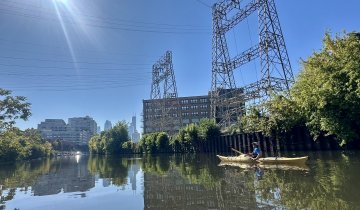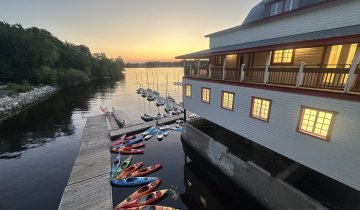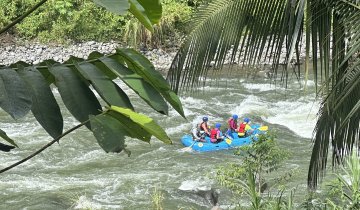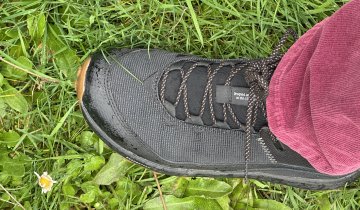Bike tour guide Andrew Healan warned us to avoid puddles. In New Orleans, what looked like a two-incher could turn out to be a serious pothole. But on the positive side, these bikes were designed for New Orleans, with specially made fat tires, tough tubes and extra heavy construction to survive the rough streets.
Even though I once lived in New Orleans for a year and a half, I never rode a bike there. But it turned out to be a great way to see the city. The city’s post-Katrina reboot included going from about seven to more than 100 miles of bike lanes. Plus, a hill-averse cyclist couldn’t ask for a flatter city.
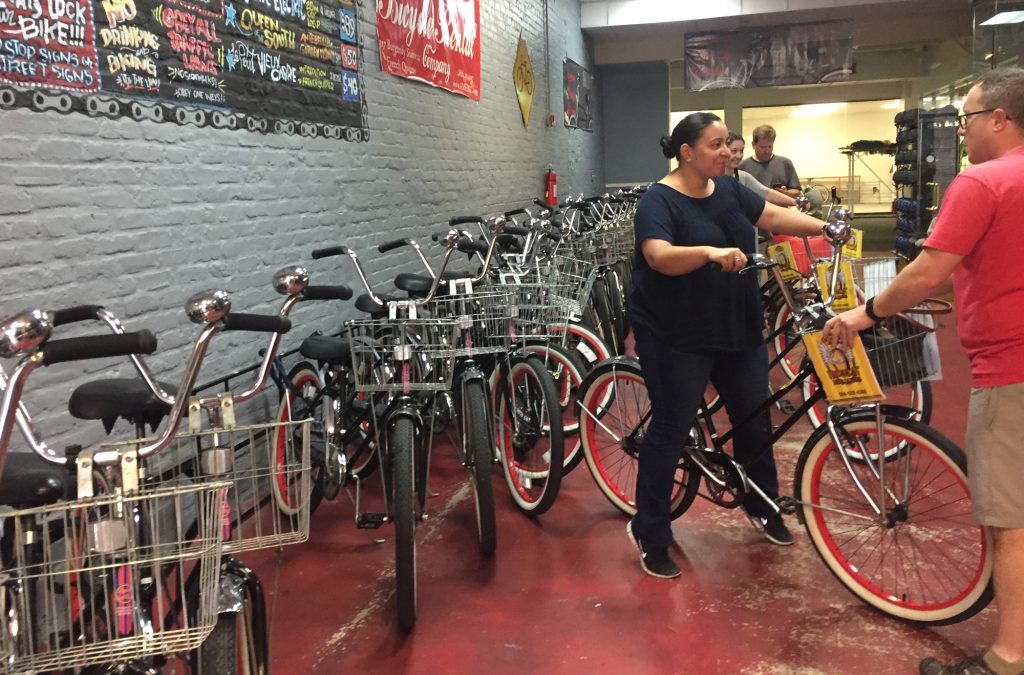
These bikes are specially made for the mean streets of New Orleans.
My group of four was taking Free Wheelin’ Bike Tours’ three-hour Creole Crescent Tour, their most popular, which departs from their shop in the French Quarter. Three hours might sound like a long time if you’re not currently an avid cyclist, but we spent no more than half that time peddling. The other half was New Orleans history lessons. And a few culinary recommendations, such as Andrew suggesting we try Tater Tachos – nachos with tater tots subbed for chips – at a bar in the Marigny neighborhood called 13. “It’s a meal made by a drunk person for a drunk person,” Andrew enthused. “Or a nine year-old boy. They have the same amount of impulse control.”
We may have been on bikes, but you couldn’t call the tour fitness-focused. Still, some New Orleanians might consider it a workout. At the very least, we spent three hours not drinking hurricanes and eating tachos.
The Guide Psyche
Andrew is a docent for the historic Gallier House as well as leading bike tours. He’s both a committed student of New Orleans history and adept at bike guiding skills, which include fearlessness in zipping around the treacherous streets, navigating potholes and motorists not entirely accustomed to bikes. (The streets were rough enough that my bell seemed set on auto-ring.) Andrew had that crucial guide skill of putting others first. He’d lead till we got to a dicey intersection, then block traffic while waving us through, and a minute later have passed us all again to direct our next turn. Personally, I’m a bit of a chicken. I totally lack the ability to watch out for other people’s welfare while downplaying my own. So people like Andrew always fascinate me.
Plessy, Ferguson and Studio Be
Most people who’ve studied American history have heard of Plessy vs. Ferguson. If the 1896 court case is lost in the cobwebs of your mind, here’s a quick recap: In 1892, local shoemaker Homer Plessy refused to sit in a separate train car designated for black people, hoping his action would overturn Louisiana law. No dice. Judge Ferguson ruled that “separate but equal” was constitutional, an awful decision that stayed on the books until Brown vs. Board of Education in 1954.
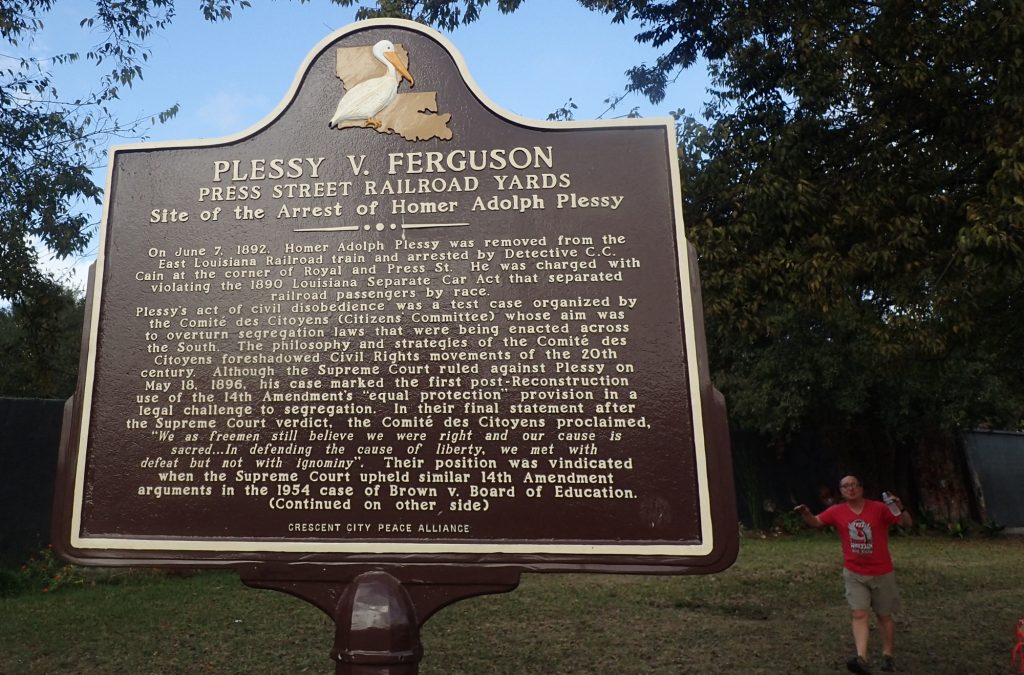
The marker on that spot that cemented the whole “separate but equal” travesty into law from 1896 until 1954
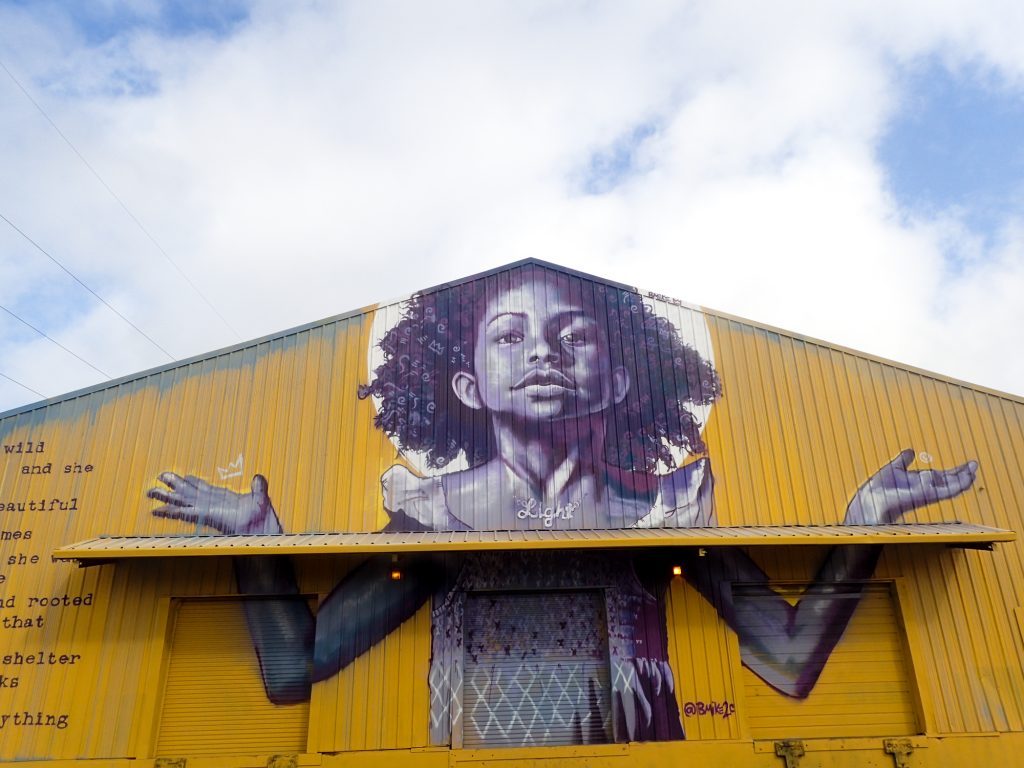
The Studio Be mural
Once we’d biked into the Bywater neighborhood, Andrew stopped and told us Plessy’s story as we stood right where he’d fatefully boarded that train. Across the street is Studio Be, an art space featuring a gorgeous mural of a young black girl that brightens up this solemn intersection.
Saint Louis Cemetery Number Three
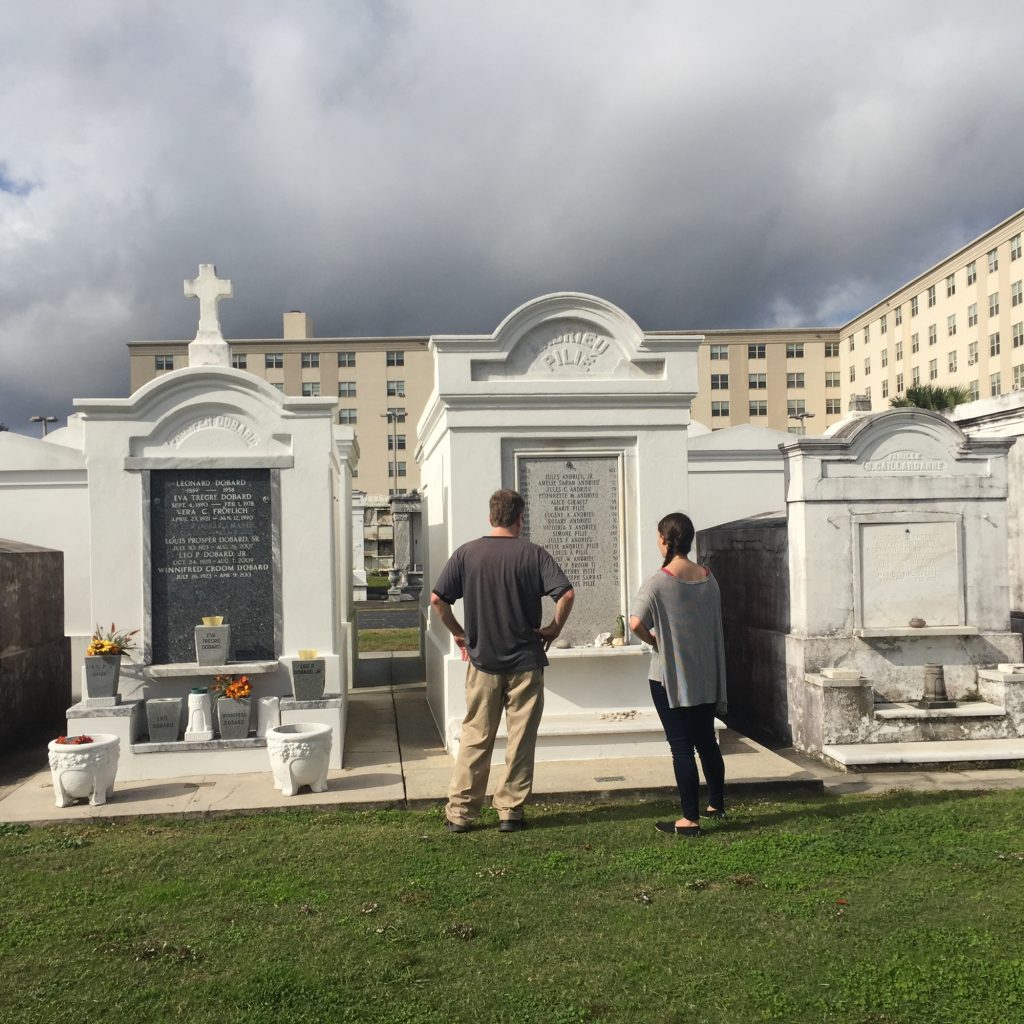
Checking out the tombs at St. Louis Cemetery Number Three
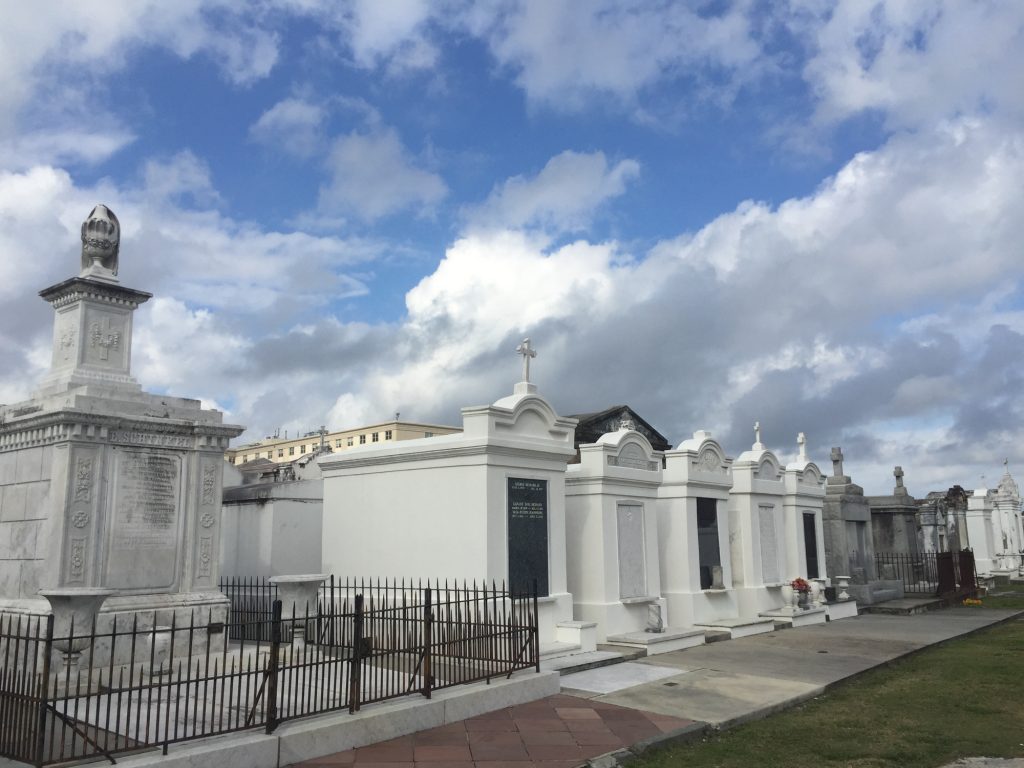
Above-ground city of the dead
At Saint Louis Cemetery Number Three on Esplanade, Andrew explained about the above ground crypts. When 85 percent of your city is below sea level and the highest point is 14 feet, it only takes a few corpse-dislodging floods before people rethink traditional in-ground burials. Compounding this problem, the Catholic Church banned cremation until 1965. So space was at a premium. Andrew showed us the temporary crypts, where bodies were allowed to decompose for a year and a day before the remains were swept into a burlap sack and added to the grander family crypts. This all sounds a bit macabre, but New Orleans cemeteries are works of art. We had a little time to wander and take pictures.
City Park
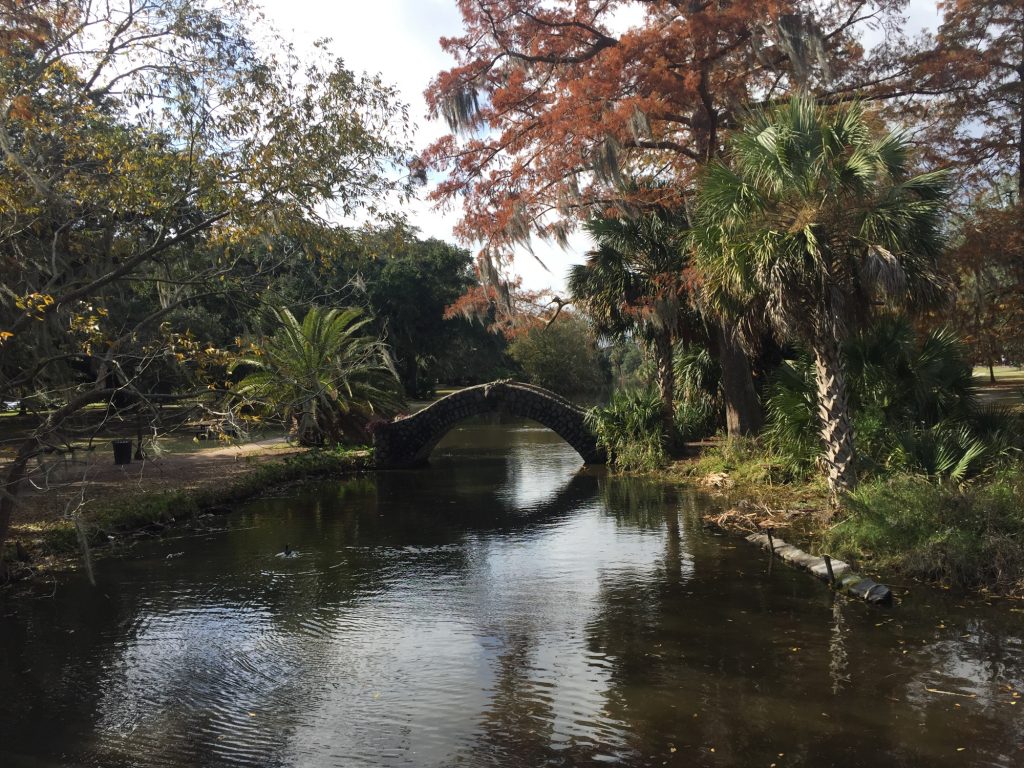
City Park, one of New Orleans’ most popular parks
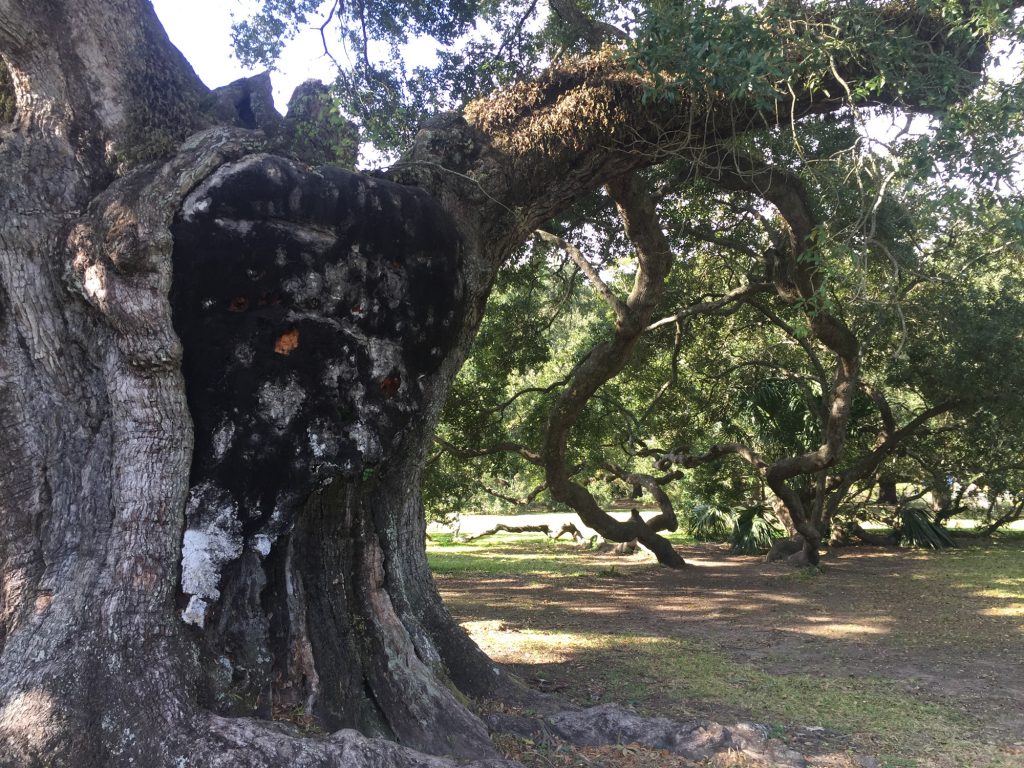
The famous 803 year-old McDonogh live oak
Free Wheelin’ takes a coffee break at Morning Call in City Park, which Andrew says has the best beignets in town. We visited the McDonogh oak tree, a live oak which is allegedly 803 years old! I’m not sure how they dated it, but it’s one impressive tree. And it’s had a hard life. Andrew told us that after a lightning strike in the 1950s, the tree was hollow so it was filled with cement. Several posts were added to help prop it up – the tree responded by growing around the posts. Resurrection ferns cling to its limbs. They were brown the day we visited, but that night it rained. The next day the ferns were bright green. And yes, I did go back and check. The Spanish moss hanging from these trees was a hot commodity at one time. Locals stuffed their mattresses with it. In 1908, it was a boom crop shipped to Detroit to stuff seats in Fords. But Andrew warned us not to take souvenir Spanish moss; it’s crawling with bugs.
The Treme
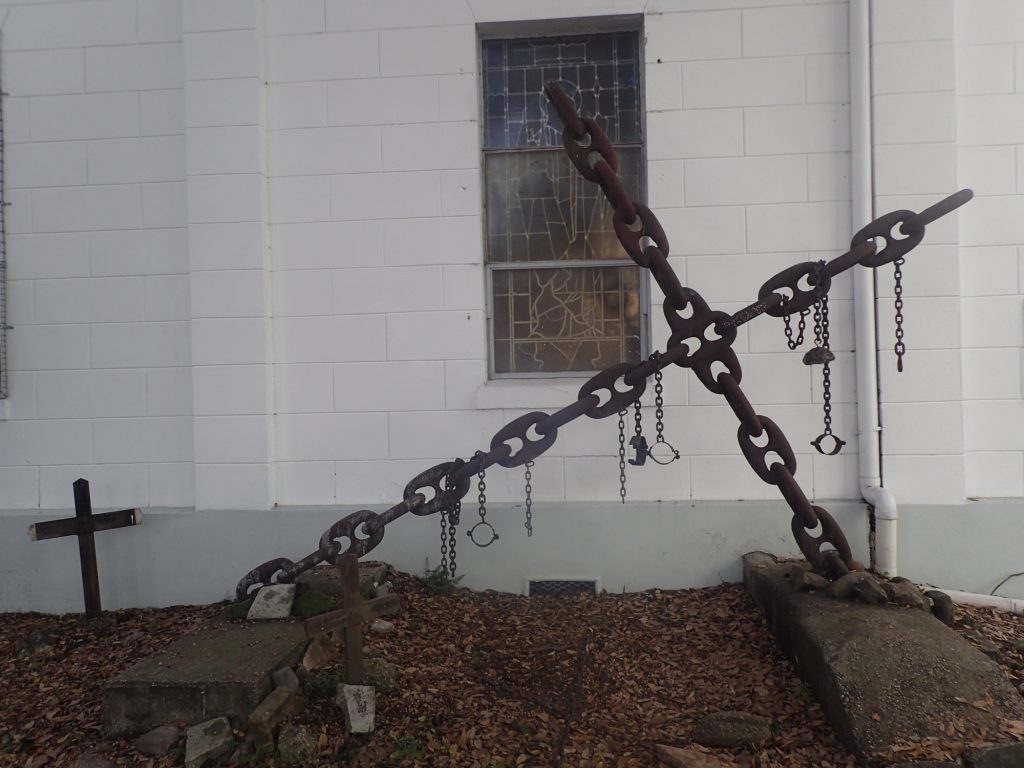
Tomb of the Unknown Slave outside St. Augustine Church in the Treme neighborhood
“We’re the only bike tour to roll through the Treme,” Andrew told us as we approached the historic black neighborhood made famous by an HBO TV show. “Treme is a front porch neighborhood,” he said, encouraging us to ring our bike bells and say hi to everybody. The Treme was a plantation until 1790, when the land was divided up and mostly sold to free people of color. It has one of the city’s highest rates of home ownership, Andrew said, and also one of the highest post-Katrina return rates. We stopped by Saint Augustine, a Catholic church founded in 1842 by free people of color. Outside the church is the extremely moving Tomb of the Unknown Slave. This monument was assembled from the anchor chain of a slave ship and hung with shackles. We also visited Al Jackson, who is in the process of opening a Jazz Museum in the Treme. He’s also organizing walking tours that visit 15 spots where well known jazz musicians lived. Jackson reprimanded one of our tour participants for taking out his camera in the fledgling museum. “No photos,” he said. “It’s like the Guggenheim.”
Three hours passed quickly. The ride was easy and since New Orleans is so flat, it seemed like we didn’t go very far. But over the next couple of days, as I further explored 2016 New Orleans, I realized we’d covered a good bit of ground. This is a fun tour for anybody who enjoys history and an easy bike ride.
